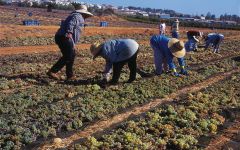Toro Albala Don PX 1972


Product Details
Your Rating
Somm Note
Winemaker Notes
Other Vintages
2015-
James
Suckling
-
James
Suckling
- Decanter
-
Robert
Parker -
Wine
Enthusiast
-
Robert
Parker -
James
Suckling
- Decanter
-
Robert
Parker -
James
Suckling
-
Robert
Parker
-
Robert
Parker
-
Wine
Spectator





Fortunately, a few enlightened estates in Montilla-Moriles have played to these strengths, and are concentrating on producing exciting, unfortified wines of great richness and complexity, usually from the hedonistic Pedro Ximinez grape, confident that fine wine connoisseurs will discover them sooner or later. One of the most remarkable of these is Bodegas Toro Albala.
The estate had a rather sedate beginning, back in 1844, on the slopes of Aguilar Castle. But in 1992 José Maria Toro Albala arrived, and the fun began. One of the wine world's less conventional characters, he immediately made his mark by moving the whole bodega into a disused electrical plant. Other developments include wooden labels and his own patented invention "Trapped Air" - a novel approach to the problem of conserving wine in perfect condition.
Above all, Senor Toro Albala is a fanatic about wine in general, and top-quality sweet wine in particular. He says "Wine is as old as the bible, and is best savoured knowing it's culture", and visitors have a chance to tour his museum of vineyard tools, machinery, reference material and objects from history. Some of his wines merit a place in the museum, including the Gran Reserva which has aged 25 years in barrel, and the occassional release of outstanding pre-war vintages.
Despite all this history, the bodega has invested considerably in all the latest technology equipment, thus ensuring maximum control at every stage of the winemaking and ageing process. Here is a unique combination of excellent raw materials, modern technology, and respect for the traditional Montilla methods and styles, and above all a serious commitment to making the best dessert wine possible.

Apart from the classics, we find many regional gems of different styles.
Late harvest wines are probably the easiest to understand. Grapes are picked so late that the sugars build up and residual sugar remains after the fermentation process. Ice wine, a style founded in Germany and there referred to as eiswein, is an extreme late harvest wine, produced from grapes frozen on the vine, and pressed while still frozen, resulting in a higher concentration of sugar. It is becoming a specialty of Canada as well, where it takes on the English name of ice wine.
Vin Santo, literally “holy wine,” is a Tuscan sweet wine made from drying the local white grapes Trebbiano Toscano and Malvasia in the winery and not pressing until somewhere between November and March.
Rutherglen is an historic wine region in northeast Victoria, Australia, famous for its fortified Topaque and Muscat with complex tawny characteristics.

Montilla-Moriles is a DO wine zone in Andalucia, in southern Spain, just south of Córdoba city but inland from the coast. Historically the wines of Montilla-Moriles made their way into the sherries made in Jerez. But once it was awarded DO status in 1945, Montilla-Moriles began to establish its own identity. The chalky and sandy soils combined with extremely hot temperatures are best to produce Pedro Ximénez, which accounts for nearly three quarters of the region’s production, some of which is still legally sold to Jerez and Málaga producers. The unique conditions of Montilla-Moriles allow for Pedro Ximénez to be bottled also in the Vinos Dulces Naturales (naturally sweet) style, a non-fortified style for which the region is recognized.
Muscat and Lairén are also produced for blending. Palomino is not suited to the extreme conditions of the area.
The basic types of Montilla-Moriles DO wines include young fruity wines, aged (crianza) wines, and generosos, which are aged in a solera system similar to those in Jerez. The resulting styles of generosos, simply known as, Montilla, while similar to sherry, perhaps display a bit less finesse given they are aged away from the cooling effects of the Atlantic.
